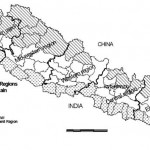IDR Blog
South Asia Satellite: India harnesses technology for regional good
On May 5, India successfully launched the Geosynchronous Satellite Launch Vehicle (GSLV-F09), carrying the GSAT-9, better known as the first South Asia Satellite, built by the Indian Space Research Organisation (ISRO). The launch of the satellite not only boosted India’s ‘Neighbourhood First’ policy but created a new era in space diplomacy.
In 2014, while addressing the Parliament of Nepal, Prime Minister Narendra Modi stressed the need for launching a common satellite for South Asia. Earlier, at the launch of the Polar Satellite Launch Vehicle (PSLV – C23), Modi had asked India’s scientific community “to take up the challenge of developing a South Asian Association for Regional Cooperation (SAARC) satellite that we can dedicate to the neighbourhood as a gift from India”.
Pakistan’s decision to opt out of the project forced New Delhi to change the initiative’s name to South Asia Satellite. The successful launch of the South Asia Satellite marks the fulfilment of that objective. The entire cost (Rs 450 crore/$36 million) of this project is borne by India. The 2,230-kg satellite, a spatial communication vehicle, covers all South Asian neighbours of India with the exception of Pakistan.
The idea of a South Asian Association for Regional Cooperation (SAARC) satellite is not new. On April 26, 1998, the idea of a SAARC satellite was discussed by Information Ministers of the member states. However, the idea was shelved, largely due to tensions between India and Pakistan. A year later, the Kargil conflict broke out between the two countries, and the idea of a SAARC satellite was relegated to the background.
The larger failure of SAARC is always attributed to mutual distrust between India and Pakistan. Initially, Pakistan had also welcomed India’s move to build the SAARC satellite. However, later it has raised a query regarding the Indian intention to steal sensitive information through a satellite. Finally, Pakistan, which sees itself as perennially in competition with India, withdrew from the project citing its own space programme.
India has always recognised that space has dimensions beyond national considerations and can only be addressed through international partnerships. Internationally, India is viewed by space-faring nations as an emerging space power, with the ISRO seen as capable of achieving its goals in a cost-effective and time-efficient manner compared to its Western peers.
In February 2017, India successfully launched a rocket that placed 104 satellites from the US, the Netherlands, Switzerland, Israel, Kazakhstan, and the UAE into orbit around the earth.
Technological capabilities have become the important aspect of economic and military power. Use of technological capabilities to serve both hard and soft power is not an entirely new development. The world had witnessed a threat of nuclear technology during the Cold War period. However, the role of civilian technology in diplomacy got an impetus in the last decade or so. Many countries have successfully employed their civilian technical competence as a tool of foreign policy. With the successful launch of the South Asia Satellite, India has also indicated its prowess in leveraging technological capabilities to foster regional integration and as an effective tool of diplomacy.
The history of South Asia serves to remind us that natural disasters, mainly cyclones, earthquakes and droughts, have not just destroyed millions of lives but have been a major impediment to development and progress in the region. It is the need of the hour to generate and compile real-time scientific data to avoid natural disasters. The South Asia Satellite will prove helpful in addressing these imminent issues and reduce the risk and impact of natural disasters.
Another use of the satellite is to resolve water woes in the region. By applying space technology, the seven countries can undertake resource mapping as a first step towards carrying out water management of the Himalayas, which is the water source for a large part of South Asia. In addition, Bangladesh, Maldives and India are facing the problems of climate change. The South Asia Satellite could study the exact nature of the threat and may even come up with solutions.
Besides, the South Asia Satellite will help partner-countries overcome infrastructure bottlenecks and facilitate better governance, banking, and education in remote areas, besides more predictable weather forecasting.
The South Asia Satellite is a geosynchronous communications and meteorology satellite and will offer a significant capability to each of the participating countries in terms of DTH (direct-to-home) services. Each South Asian country will get access to one transponder through which they will be able to beam their own programming, besides common “South Asian programming”.
The South Asia Satellite will enhance:
- Direct to Home (DTS) services
- Disaster management
- Resource mapping / water management
- Telemedicine
Leaders of all participating countries have hailed the launch of the South Asia Satellite and expressed their gratitude for India’s generous help. In South Asia, India, Pakistan and Sri Lanka have their own satellites. While India’s space technology is independent and robust, Pakistan and Sri Lanka have been helped by China in theirs.
There is no doubt that with the help of the South Asia Satellite, India is trying to counter Chinese influence in the region. However, in this space race, China already has an early mover’s advantage. Now, India should help other states in the region to build and facilitate a robust space programme of their own.
The South Asian region is struggling with plenty of problems and is a reminder of the need to work beyond national territories. And with the launch of the satellite, PM Modi has actually extended his ‘Sab Ka Saath Sab Ka Vikas’ (With All, Development for All) to India’s neighbourhood, essentially to service the needs of the poor in South Asia.
The South Asia Satellite is not a panacea for all of these evils but provides opportunity for South Asian states to work closely for a common cause and eradicate many of its urgent predicaments and problems with the help of modern technology.




